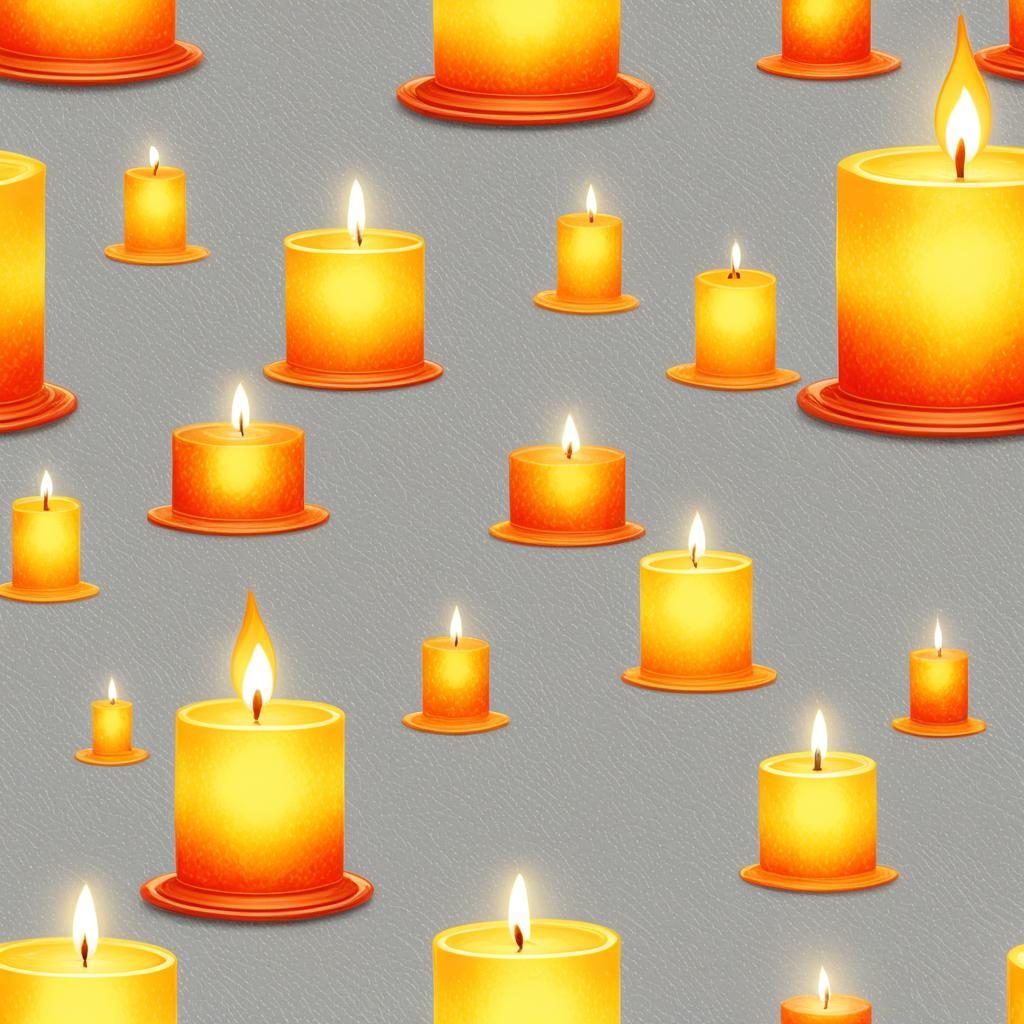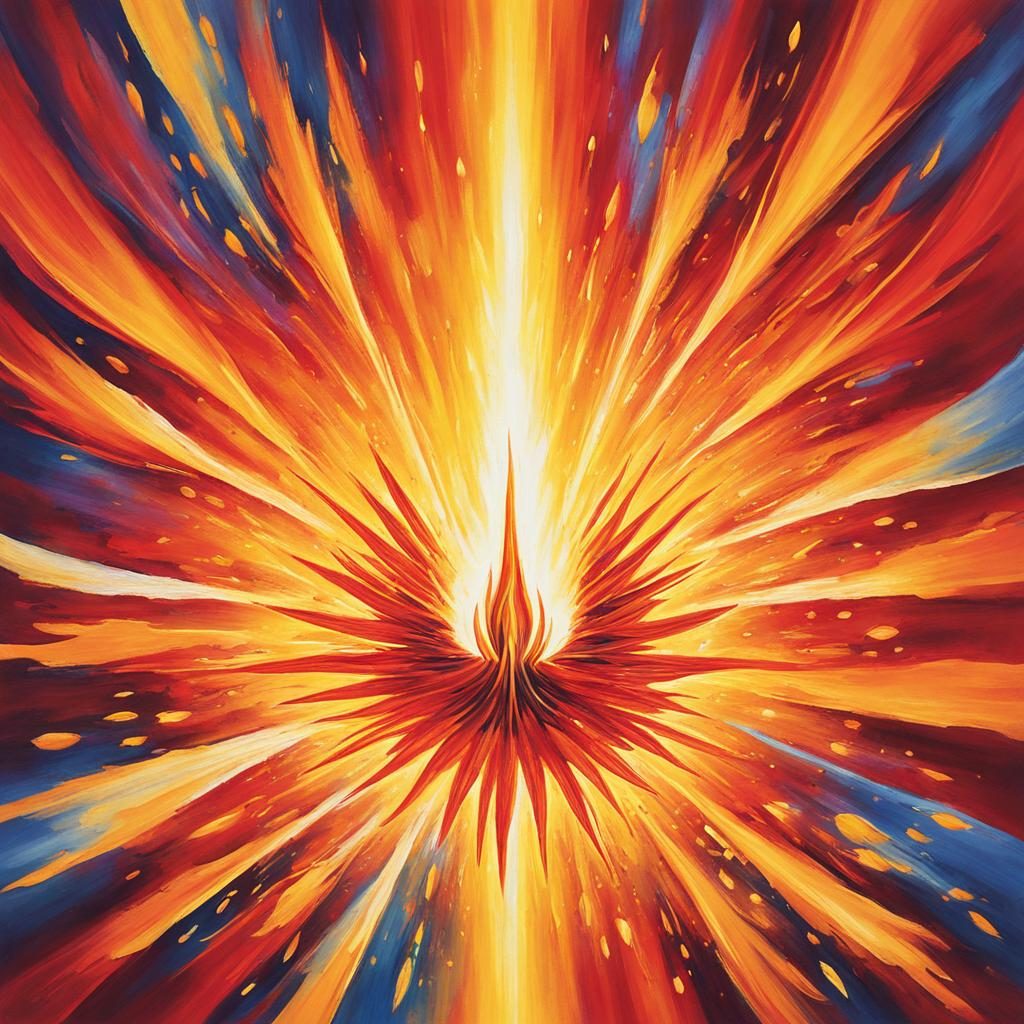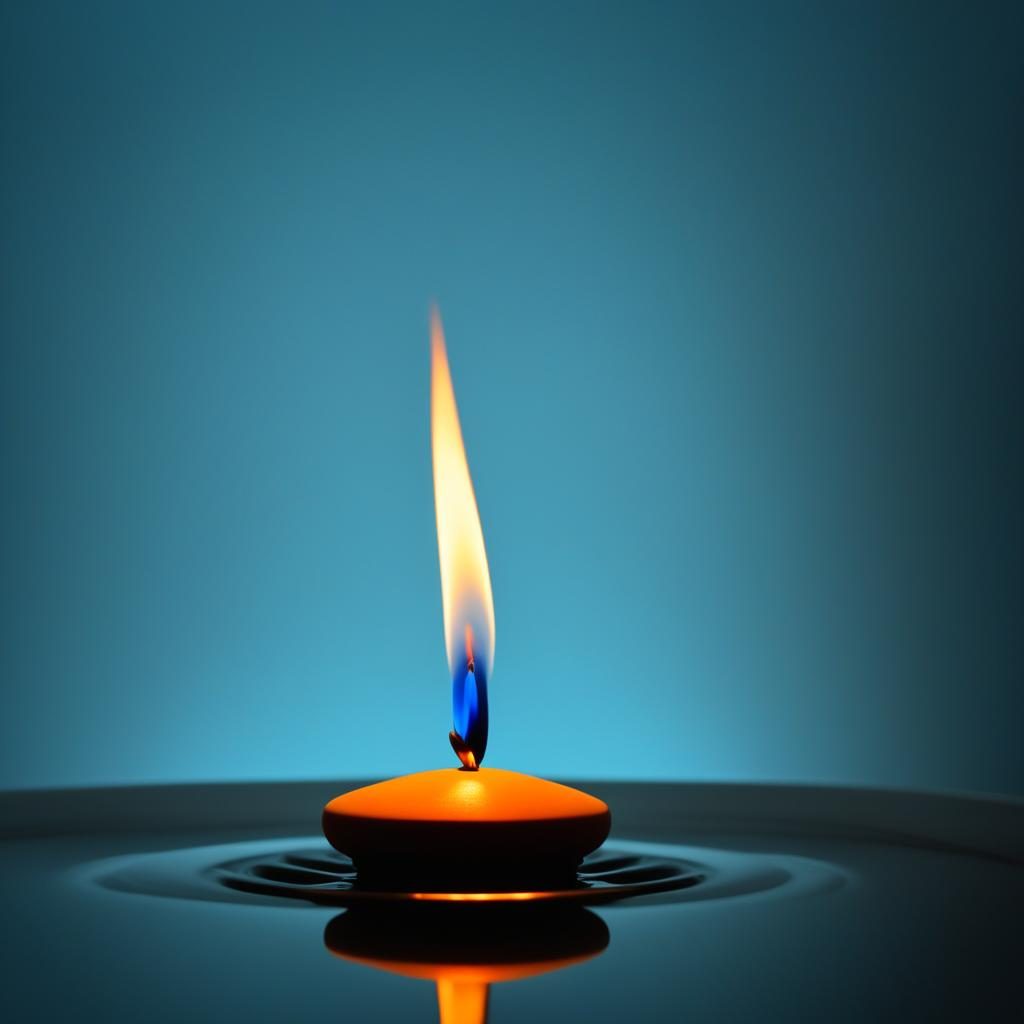In this article, I will explore the intriguing phenomenon of a candle flame that starts off high and then lowers, uncovering its spiritual significance and symbolism. If you’ve ever observed a candle flame flickering and changing in intensity, you may have wondered about its deeper meaning. Join me as we delve into the mystical world of candle flames and unravel the secrets behind their fluctuations.
Throughout history, candles have held great spiritual significance, serving as vehicles for prayer, meditation, and sacred rituals. The dancing flame of a candle is believed to connect us with the divine and provide insights into our spiritual journey. Understanding the messages conveyed by candle flames can offer guidance and clarity in our quest for self-discovery and enlightenment.
Key Takeaways
- Observing the height, color, and movement of a candle flame can provide valuable insights into your spiritual journey.
- A high flame symbolizes intense energy and spiritual power, while a low flame may indicate the need for introspection or self-care.
- Candle flames can change in intensity due to factors such as air currents, wax composition, and wick quality.
- Books and resources on candle symbolism can deepen your understanding of the spiritual significance of flames.
- Gaining insights from spiritual leaders can offer diverse perspectives on the transformative power of candle flames.
Interpreting Candle Flame Meanings
When it comes to candle flames, they hold a world of meaning and symbolism, offering valuable insights into our spiritual journeys. Whether you’re using a candle for meditation, prayer, or spiritual rituals, understanding the different aspects of a candle flame can provide guidance and enlightenment. Let’s delve into the art of interpreting candle flame meanings and explore how height, color, and movement can convey specific messages and energies.
Height: The height of a candle flame can reveal a lot about the spiritual energy present in a space. A flame that burns high signifies intense energy, spiritual power, and a strong connection to the divine. It indicates a heightened state of awareness and can symbolize passionate emotions, inspiration, and the presence of higher forces. Conversely, a low flame may indicate a decrease in energy or a need for replenishment. It suggests a period of rest, introspection, and the importance of self-care.
Color: The color of a candle flame can also hold significant meaning. A bright, vibrant flame typically represents positivity, spiritual growth, and divine guidance. It signifies positivity and a strong connection to the spiritual realm. On the other hand, if the flame appears dim or murky, it can indicate the need for purification or the presence of negative energy that requires cleansing. Pay attention to any changes in color, as they can offer insights into the energetic state of your surroundings.
Movement: The movement of a candle flame is another essential aspect to consider during interpretation. A steady, still flame suggests a harmonious and balanced energy field. It reflects a sense of peace, stability, and a strong connection to the present moment. On the contrary, a flickering or dancing flame might indicate movement, change, or the presence of spiritual activity. This dynamic flame can symbolize the flow of energy, the activation of spiritual forces, and the potential for transformation.
By observing and understanding these different aspects of a candle flame, you can gain profound insights into your spiritual journey and the energies surrounding you. Now, let’s explore further in the upcoming sections to discover the energy levels of candle flames and the spiritual significance behind high and low flames.
The Energy Levels of Candle Flames
In this section, we will explore the energy levels of candle flames. A candle flame is not just a source of light and warmth; it also holds profound symbolic significance. The intensity and movement of a candle flame can reflect the energy present in a particular moment or spiritual experience.
A high flame typically represents intense energy and spiritual power. It signifies a heightened state of consciousness and may indicate the presence of divine forces. The vibrant dance of a high flame can mesmerize and captivate, stirring the soul and creating an ambiance of profound spirituality.
On the other hand, a low flame suggests a decrease in energy or a need for replenishment. It may signify a moment of introspection, a period of rest, or a gentle reminder to focus on self-care. Just as we need to recharge our physical bodies, our spiritual being also requires nurturing to stay vibrant and fully engaged.
The energy levels of a candle flame can be influenced by various factors. The composition of the wax, the quality of the wick, and the presence of air currents can all impact the height and intensity of the flame. In addition, the intentions, emotions, and energy we bring to a spiritual practice can also influence the energy levels manifested by a candle flame.

The Spiritual Significance of High Flames
When it comes to candles, the flickering flame holds a deeper meaning than mere illumination. The spiritual significance of high flames in candles is a topic that has captivated cultures and religions across the globe. From ancient ceremonies to modern rituals, a high flame has been associated with divine presence, spiritual enlightenment, and heightened spiritual experiences.
In many cultural and religious traditions, a high flame is believed to symbolize the presence of a higher power. It is seen as a beacon of light, representing the connection between the physical and the spiritual realms. The intensity of the flame signifies a heightened spiritual energy, often equated with spiritual awakening, purification, and transcendence.
For example, in Hinduism, the flame is revered as a representation of the divine energy, known as “agni.” A high flame is seen as a manifestation of this sacred fire, symbolizing spiritual illumination and the burning away of impurities. Similarly, in Judaism, a high flame during the lighting of the Sabbath candles is seen as a sign of divine blessings and spiritual protection.
Expert spiritual leaders and practitioners offer valuable insights into the meaning of high flames. Renowned spiritual teacher Eckhart Tolle emphasizes that a high flame can signify the presence of a higher consciousness and a deepening spiritual connection. He suggests that observing a high flame can serve as a reminder to cultivate mindfulness and be fully present in the moment.
As spiritual beings on a journey of self-discovery, the flickering high flame of a candle can serve as a guiding light. During meditation or prayer, it can remind us of the presence of something greater than ourselves, inviting us to explore the depths of our inner being and tap into our highest potential.

| Culture/Religion | Spiritual Significance |
|---|---|
| Hinduism | Representation of divine energy, spiritual illumination |
| Judaism | Divine blessings, spiritual protection |
| Buddhism | Wisdom, enlightenment |
| Christianity | Divine presence, guidance |
| Islam | Divine light, spiritual awakening |
Exploring the Meaning of Low Flames
Low flames in candles may initially appear worrying, but they hold significant spiritual symbolism. When a flame burns low, it often signifies the need for introspection, a period of rest, or a gentle reminder to prioritize self-care. This interpretation aligns with the belief that our spiritual energy fluctuates, just as the flame does.
During moments of low flame intensity, it’s essential to take a pause and reflect on our inner selves. It serves as an invitation to delve deeper into our thoughts, emotions, and spiritual growth. By embracing this opportunity for introspection, we can gain clarity and insight into our current experiences and challenges.
Furthermore, a low flame can indicate a temporary respite from intense spiritual practices or energy. It acts as a reminder to find balance and allow ourselves moments of rest and rejuvenation. Sometimes, our spiritual journey requires us to step away from the constant striving and simply be present in the stillness.
Psychologically, a low flame can also hold significance. It may symbolize a need to slow down, release stress, and practice self-compassion. As we connect with the gentle glow of a low flame, we can tap into feelings of calmness, acceptance, and inner peace.
“In the quiet flicker of a low flame, we find the wisdom to embrace stillness and nourish our souls.” – Dr. Sarah Thompson
Psychologists emphasize the importance of honoring the ebbs and flows of our spiritual energy. They suggest that a low flame can indicate a need for self-compassion, self-care, and the cultivation of inner resilience. By acknowledging and responding to these moments of lower intensity, we can maintain a balanced and sustainable spiritual practice.
Significance of a Low Flame: Key Points
- A low flame represents a need for introspection and self-reflection.
- It signifies a temporary break from intense spiritual practices.
- A low flame invites rest, rejuvenation, and self-care.
- Psychologically, it symbolizes slowing down and embracing stillness.
- Psychologists emphasize the importance of self-compassion during low flame moments.
In the next section, we will explore scientific explanations for candle flame changes, shedding light on the physical factors that influence flame behavior.
Scientific Explanations for Candle Flame Changes
Understanding the science behind candle flame changes can provide valuable insights into the physical and spiritual aspects of flame behavior. In this section, we will explore the principles of combustion and the factors that influence the height and intensity of a candle flame.
Combustion, the process of burning, is a complex interaction between fuel, oxygen, and heat. When a candle is lit, the heat from the flame melts the wax near the wick, creating a liquid fuel that is drawn up the wick. As the liquid fuel reaches the flame, it vaporizes and mixes with the surrounding oxygen, creating a reaction that produces heat, light, and different colors.
Air currents play a significant role in influencing the behavior of a candle flame. Even a slight breeze can cause the flame to flicker or lean in a particular direction. The movement of air disrupts the balance between the fuel and oxygen, affecting the flame’s stability and intensity.
The composition of the candle’s wax also influences the flame. Different types of wax burn at different temperatures and produce varying amounts of soot. For example, candles made of natural beeswax tend to burn cleaner and with a steadier flame compared to paraffin candles.
Another factor that affects candle flame changes is the quality of the wick. A properly trimmed wick allows for optimal fuel absorption and adequate air circulation, resulting in a steady and vibrant flame. On the other hand, a damaged or untrimmed wick can cause uneven burning, leading to fluctuations in flame height and intensity.
The following table summarizes the scientific factors that influence candle flame changes:
| Factor | Effect on Flame |
|---|---|
| Air currents | Flickering, leaning, or extinguishing the flame |
| Wax composition | Affects flame temperature, color, and soot production |
| Wick quality | Optimal fuel absorption and air circulation for a steady flame |

By understanding these scientific explanations for candle flame changes, we gain a comprehensive understanding of the interplay between the physical and spiritual aspects of flame behavior. Exploring both the scientific and symbolic meanings of candle flames allows us to appreciate the transformative power and insights candles bring to our spiritual practices.
Books and Resources on Candle Symbolism
Delving deeper into candle symbolism can greatly enhance your understanding of its spiritual significance. To aid you on this journey of discovery, I have compiled a list of highly recommended books and resources written by experts in the field of spirituality, psychology, and mysticism.
“Candle Magic: A Witch’s Guide to Candle Rituals” by Lucy Morningstar
In “Candle Magic: A Witch’s Guide to Candle Rituals,” Lucy Morningstar provides a comprehensive exploration of candle symbolism, rituals, and spells. This book offers practical guidance and insights into harnessing the power of candle flames for manifestation, healing, and spiritual transformation.
“The Power of Candlelight: Illuminating the Soul” by Michael Johnson
Michael Johnson’s “The Power of Candlelight: Illuminating the Soul” takes a holistic approach to understanding the deeper meanings behind candle flames. Drawing from ancient wisdom and modern research, this book delves into the spiritual, psychological, and metaphysical aspects of candle symbolism.
“Candles and the Divine: Exploring Spiritual Light” by Sarah Thompson
Sarah Thompson’s “Candles and the Divine: Exploring Spiritual Light” offers a unique perspective on the spiritual significance of candles. This book explores the intertwined relationship between light, flame, and divinity, guiding readers on a transformative journey of self-discovery through candle symbolism.
- The Encyclopedia of Candle Symbolism: Unlocking the Mysteries of Sacred Flames
- Candle Magic for Beginners: A Step-by-Step Guide to Casting Spells and Performing Candle Rituals
- The Language of Candlelight: Illuminating the Path to Enlightenment
These additional resources provide further insights, interpretations, and practical guidance for working with candle flame symbolism:
- Website: www.candlesymbolism.com
- Online Course: “Mastering the Art of Candle Magick” by Mystic Academy
- Podcast: “Flame Whispers: Unveiling the Secrets of Candle Symbolism” hosted by Luna Wells
Immerse yourself in these books and resources to deepen your understanding of candle flame symbolism. They serve as invaluable companions on your spiritual journey, offering profound insights and guidance as you explore the mystical world of candles.

Insights from Spiritual Leaders
As we conclude our exploration of candle flame symbolism, let us turn to the profound insights shared by esteemed spiritual leaders. Their wisdom transcends cultural boundaries and offers valuable guidance on the significance of candle flames and their interpretations.
Renowned spiritual leader Eckhart Tolle emphasizes the transformative power of candle flames, stating, “In the flickering light of a candle, we can witness the eternal dance between darkness and illumination, reminding us of our inner journey towards awakening.”
The Dalai Lama, a revered spiritual figure, reflects on the spiritual connection to candle flames, saying, “Candlelight symbolizes our inner luminosity and serves as a reminder to cultivate compassion and kindness, spreading light in all areas of our lives.”
Another influential spiritual teacher, Thich Nhat Hanh, offers insights into the introspective nature of low flames, stating, “A low flame invites us to turn inward, nurturing our inner light through meditation and self-reflection, allowing us to find peace amidst life’s challenges.”
By embracing the profound teachings of these spiritual leaders, we can deepen our understanding of the spiritual and transformative power that candle flames hold. Let their insights guide us as we continue our spiritual journeys, illuminating our paths with the wisdom of the ages.








